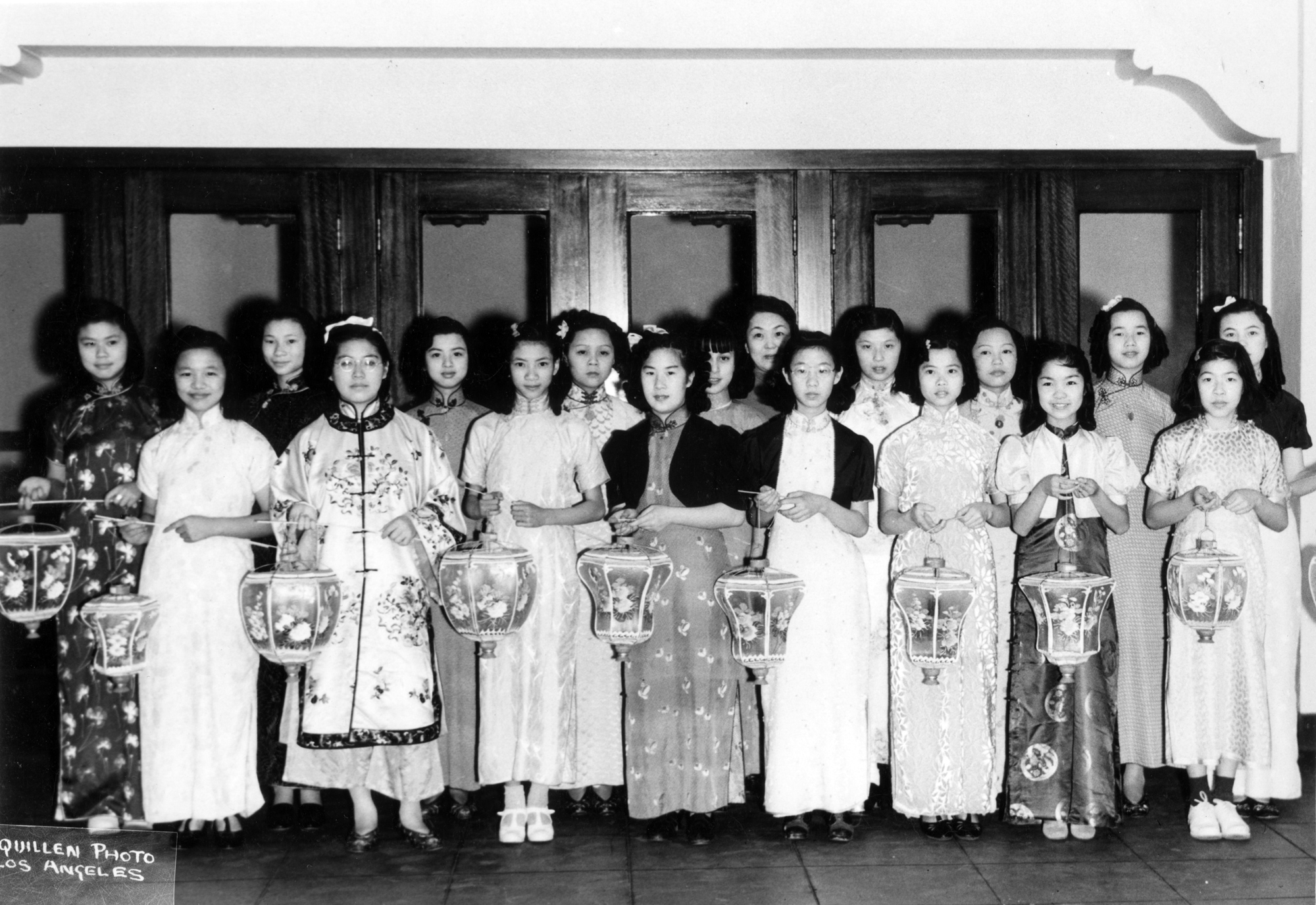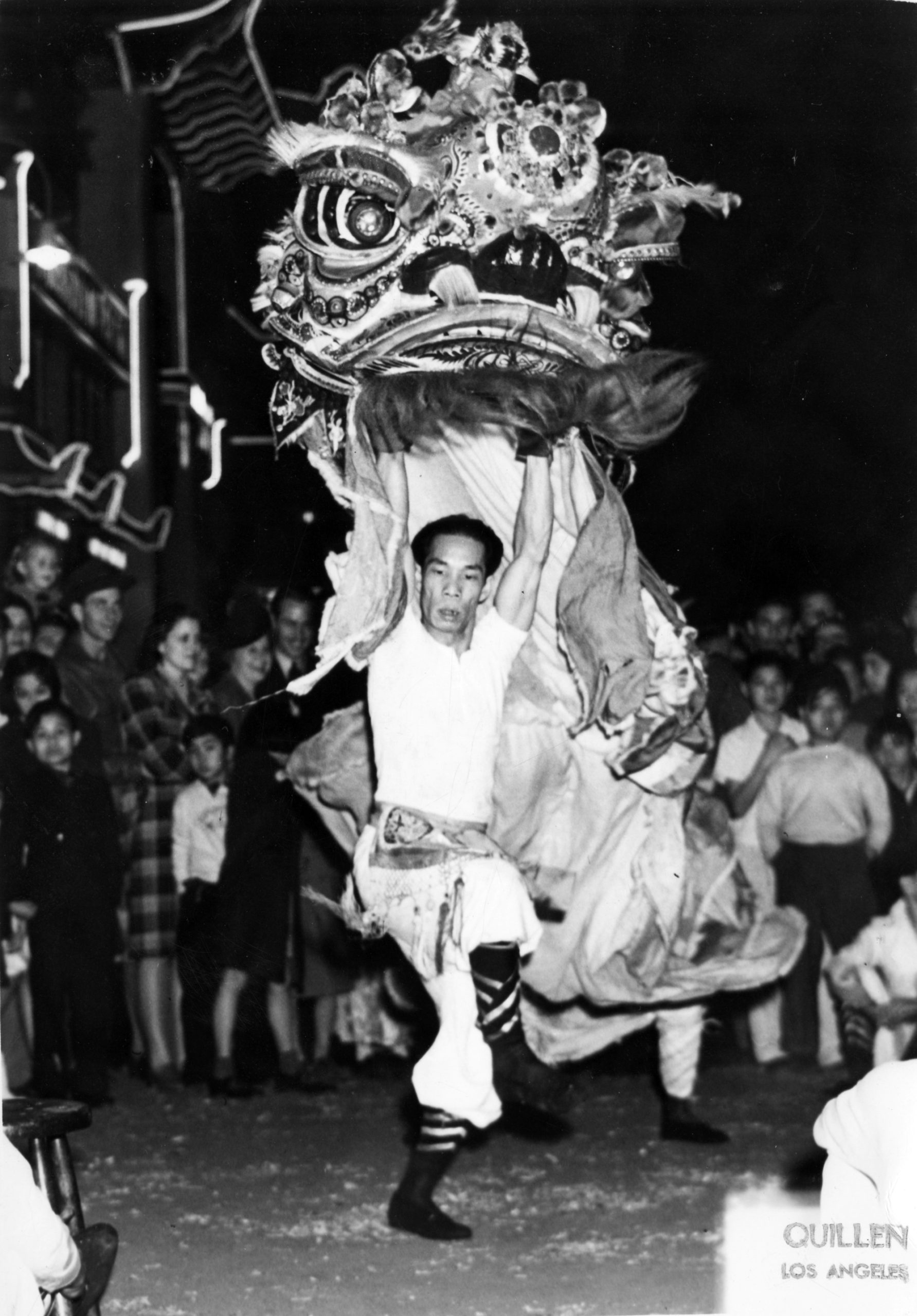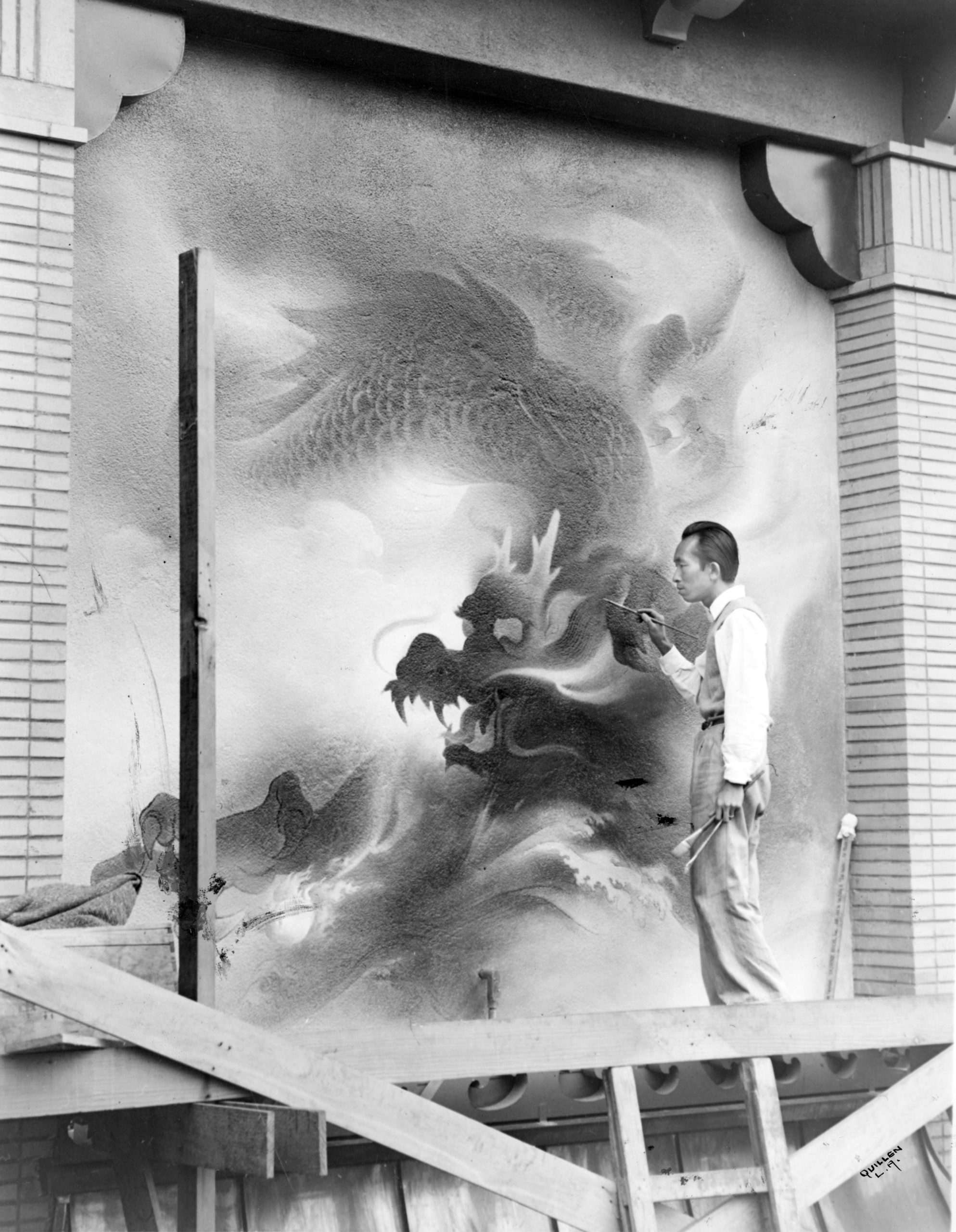The Moon Festival! Let me see if I can find my sister-in-law, Lucy...I remember they had to walk in a parade and they had these Chinese paper lanterns. Actually, they weren't paper, they were silk, like gauze, and very pretty. They held a big Chinese flag and people would throw money to support the war effort.”
Tradition
傳統
Tradition 傳統
The formation of New Chinatown enabled the Chinese community to create unique Chinese American traditions in Los Angeles. Like many immigrants to this country, the Chinese have sustained their cultural heritage while integrating into American society. Through festivals and celebrations, parades, food, and music, they invited all Angelenos to come and experience a distinctive Chinese culture. Discriminatory laws challenged many of their freedoms and denied them basic civil rights but could not suppress the celebration and preservation of their identity and beliefs.







